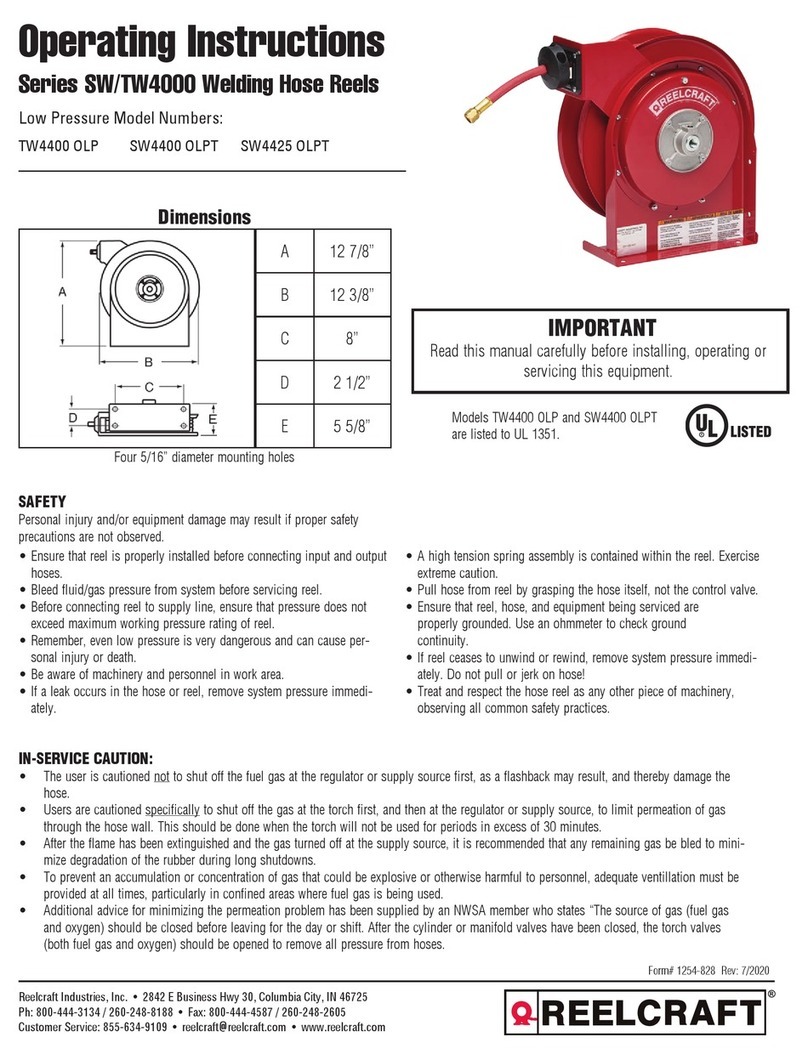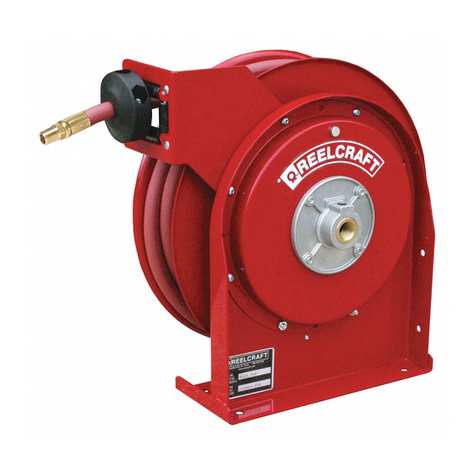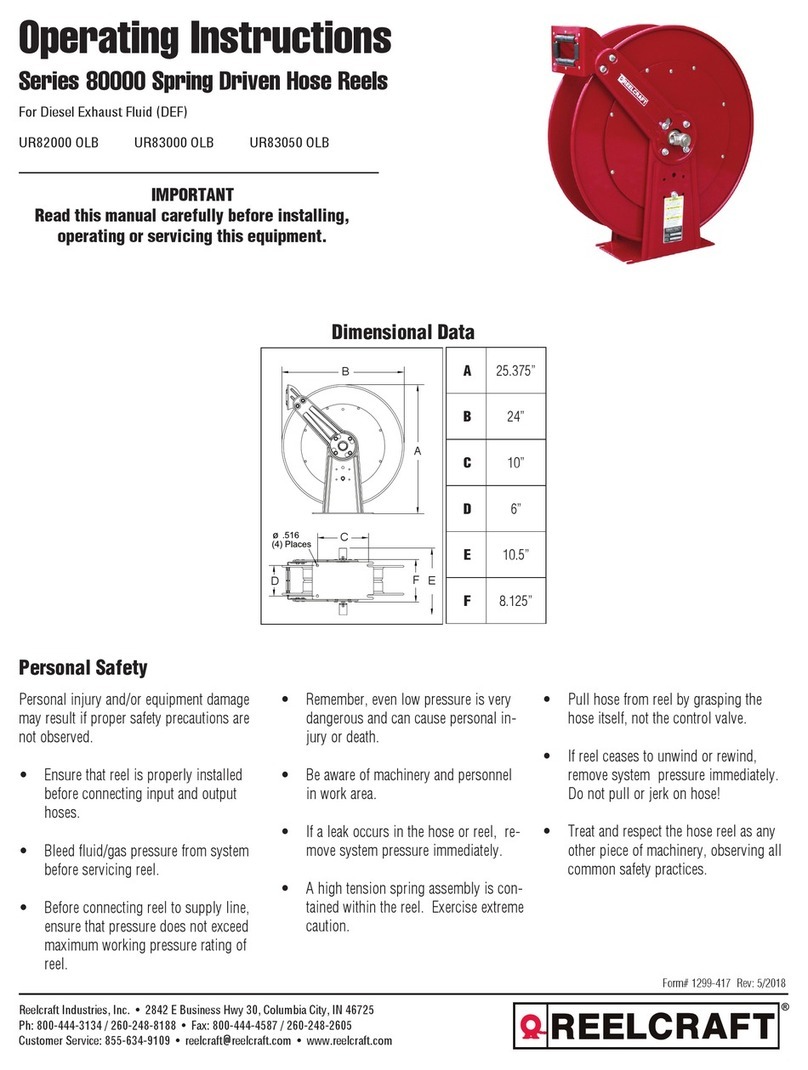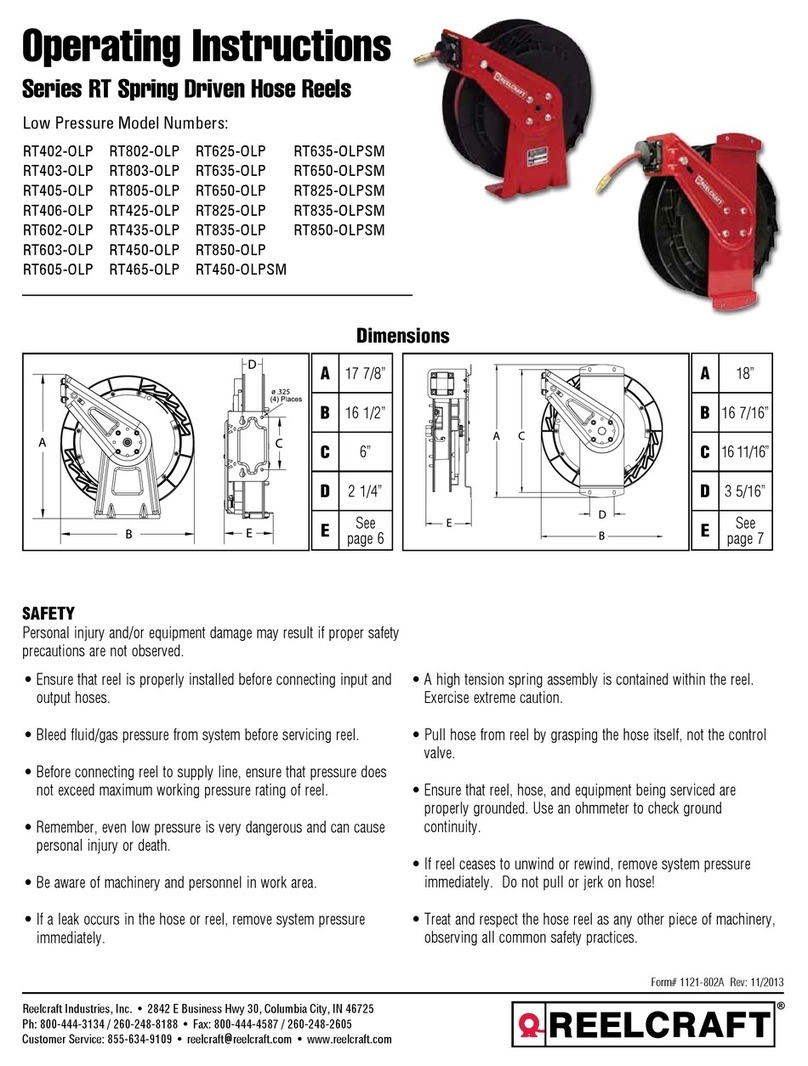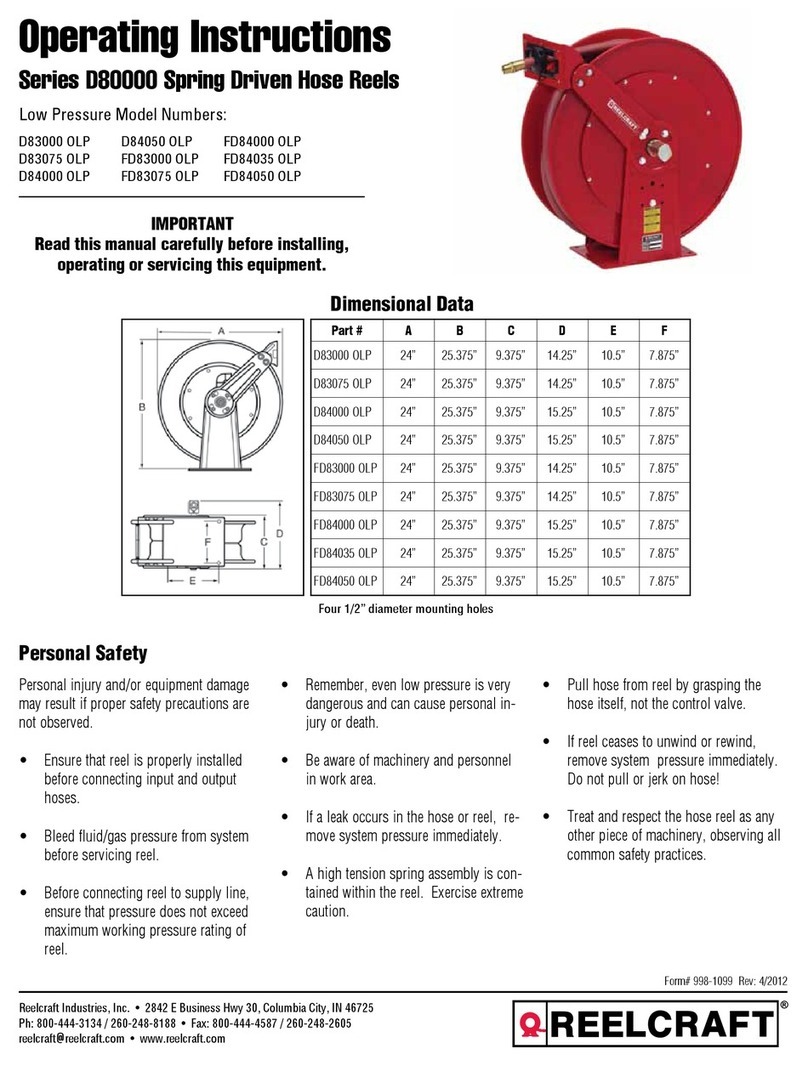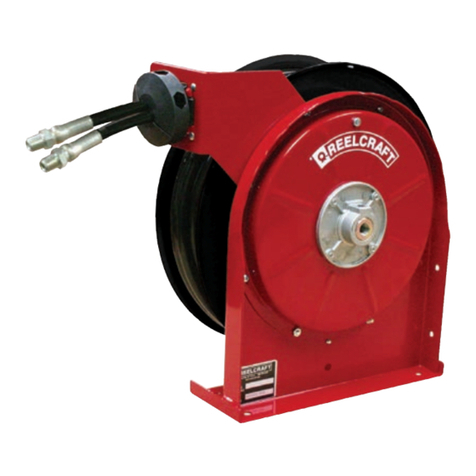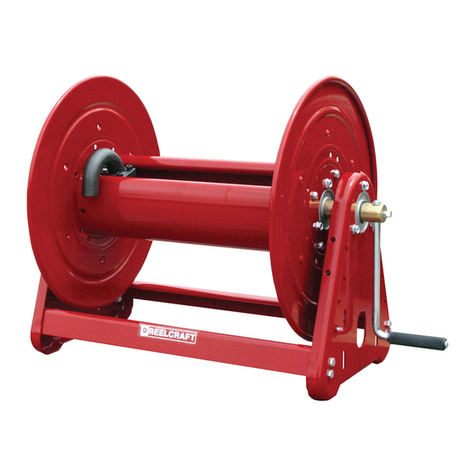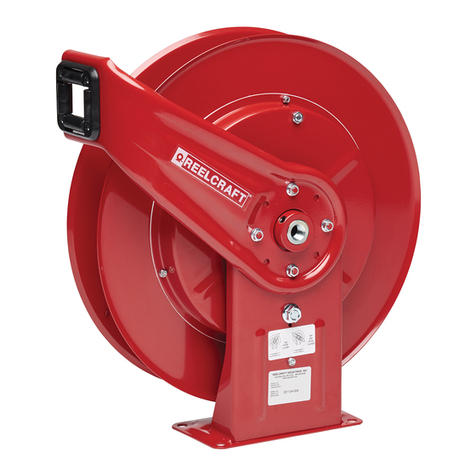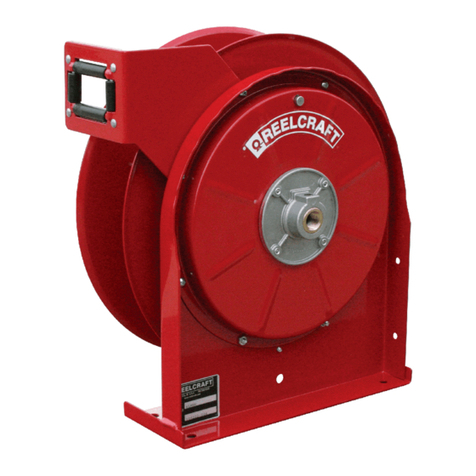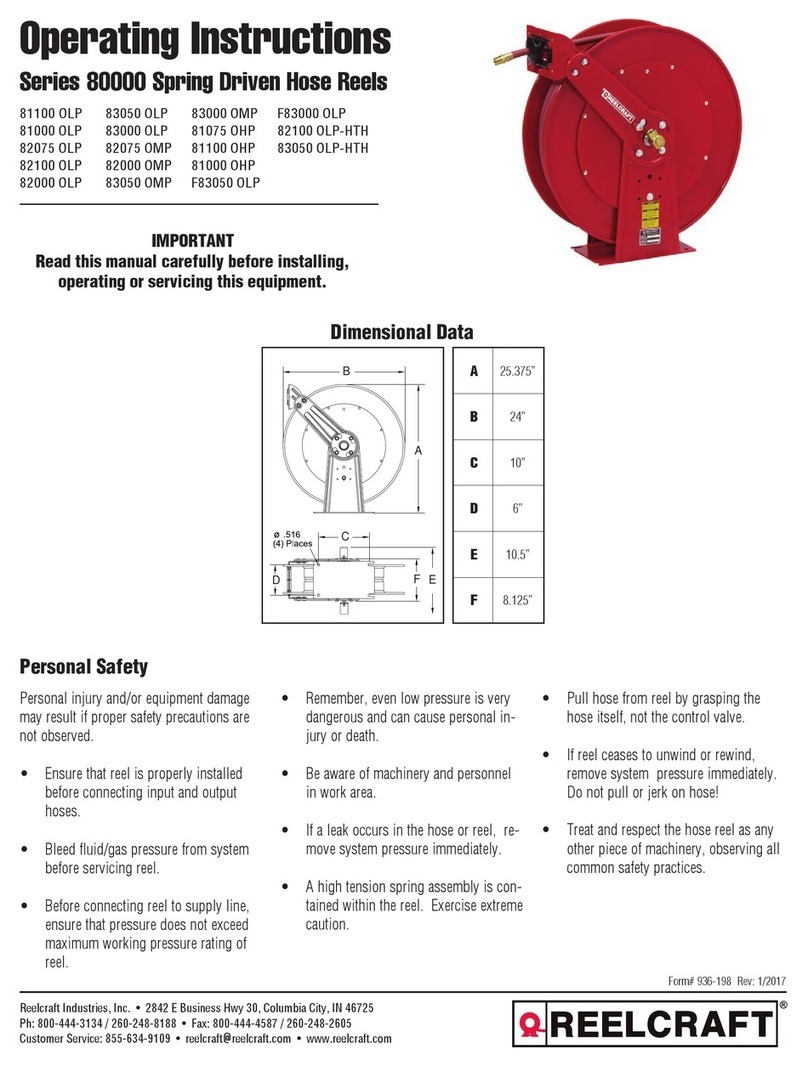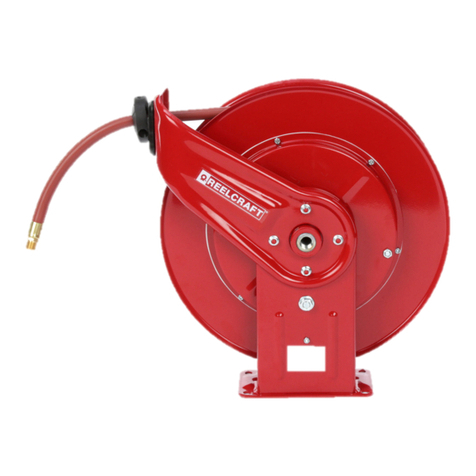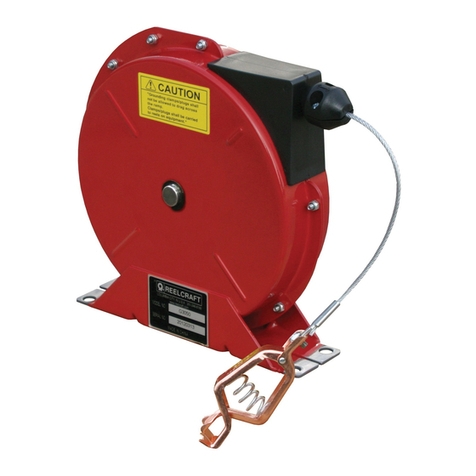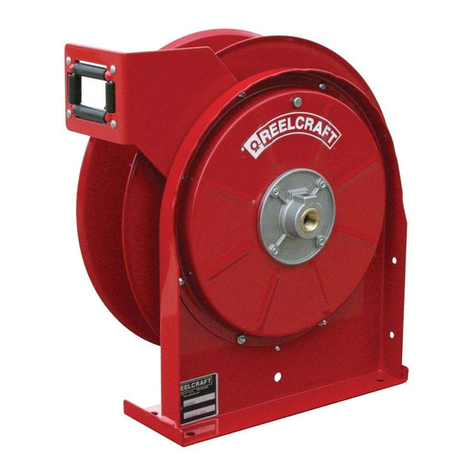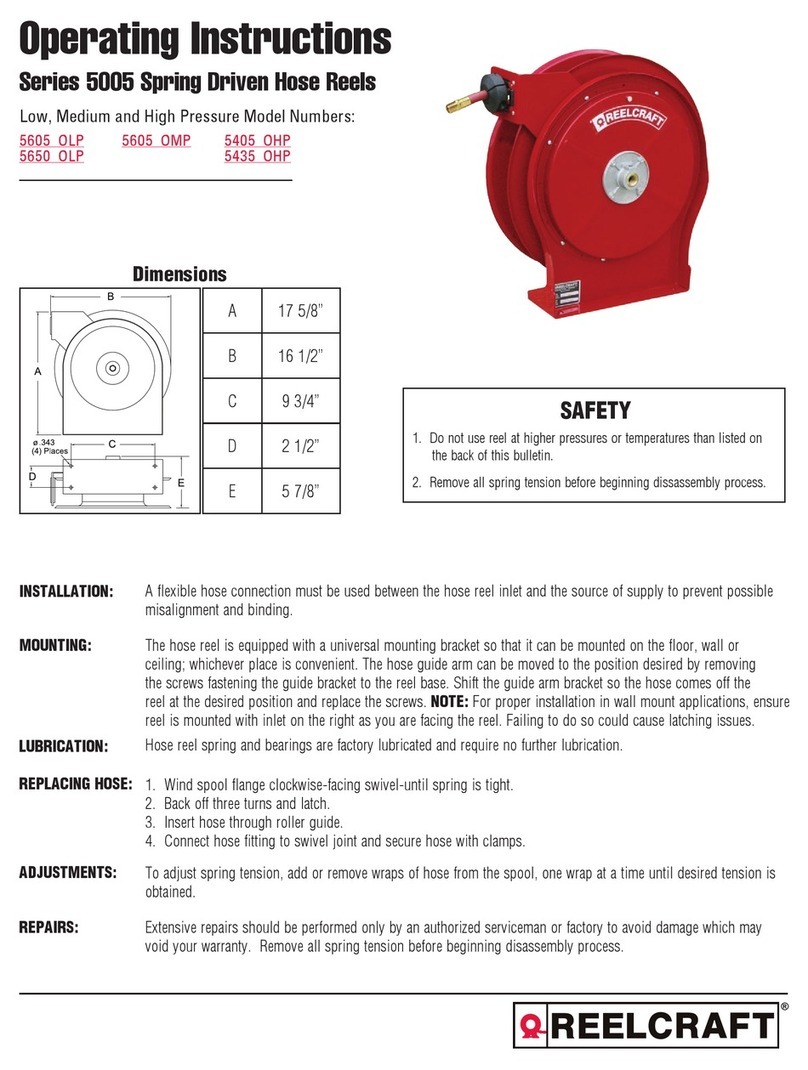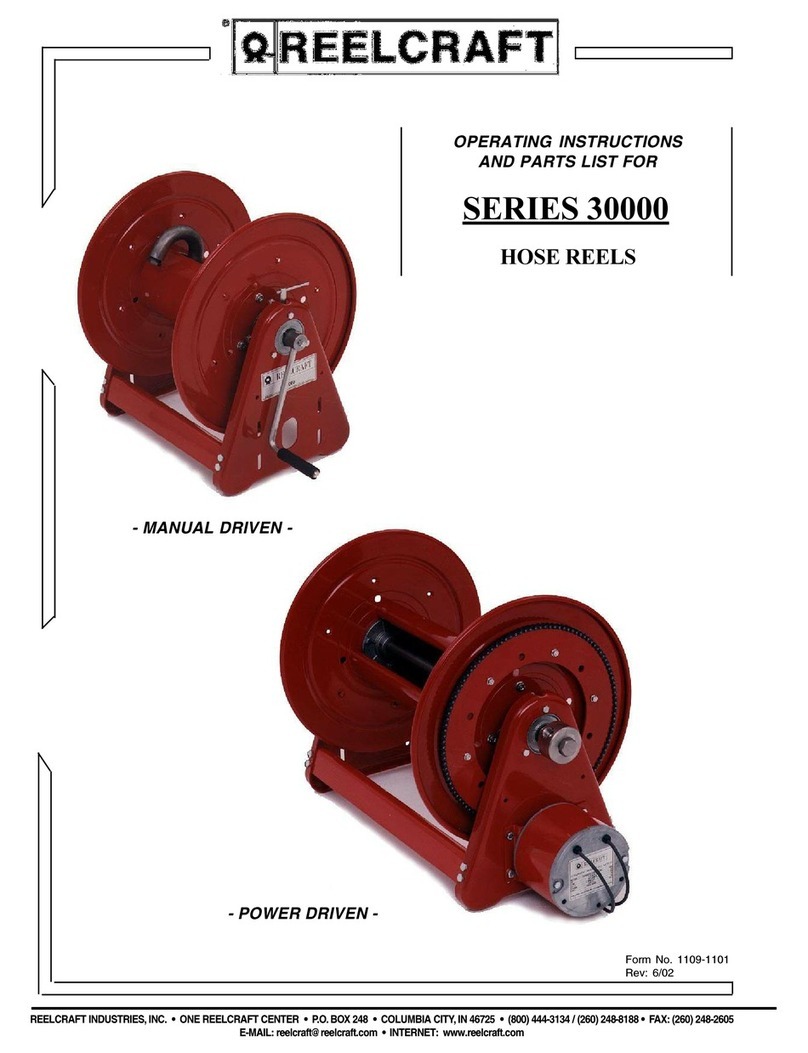
Page 2 www.reelcraft.com
Series L 5000 Spring Driven Cord Reels
Installing the Input Electrical Cable
WARNING: Use only 12/3 or 16/3 cable for input wiring. Ensure that
application does not exceed electrical rating of reel.
1. Feed input cable (3) through elbow (1) and main shaft. Make sure
that input cable extends 6” from collector.
2. Screw elbow (1) into reel.
3. Connect input wires (3) and collector ring wires (4) together using
splicing connectors (5).
4. Take the provided zip tie (not pictured) and zip tie the input cable
wires together closest to the slip ring.
5. Assemble cover (6) to reel.
Installing the Output Electrical Cable
WARNING: Select output cable in accordance with power requirement
of apparatus to be supplied. Ensure that application does not exceed
electrical rating of reel. Use extreme caution, reel under tension. Avoid
releasing latch mechanism.
1. Manually turn sheave (4) until spring is tight, back off 2 turns, and
latch.
2. Remove access cover (9).
3. Remove 6” of output cable outer jacket (3).
4. Route cable through strain relief (1), then through cut out in spool
(4).
5. Pull enough cable through for roughly 1/2 an inner wrap. Route
cable behind the brush holder (10), then route cable through the
two cable clamps (8) securing it in place.
6. Connect output wires with splicing connectors (7) as shown.
7. Connect ground wire to grounding stud (6) as shown.
8. Using Ohmmeter check for ground faults.
9. Replace cover (9).
10. Release latch and wind cable onto reel.
11. Install bumper stop (2).
Adjustments - Spring Tension
If necessary, adjust spring tension on reel by adding or removing
wraps of electrical cord from spool, one wrap at a time, until desired
tension is obtained. Add wraps to increase tension. Remove wraps to
decrease tension.
WARNING: When adding wraps of electrical cord, be careful not to
exceed the winding mechanism’s spring capacity. Add just enough
wraps of cord to achieve the desired tension. Damage to the winding
mechanism will result if spring is over-tensioned. Always be aware of
spring tension on reel. Exercise extreme caution.
Troubleshooting Instructions
Troubleshooting of the reel consists of isolating a problem to a
defective electrical cord/work device, brush holder/brushes, or collector
assembly. Refer any other discrepancies only to an authorized service
person or directly to Reelcraft.
WARNING: The following procedure directs the technician to take
voltage measurements. Remember, even low voltage is dangerous and
can cause personal injury or death. Exercise extreme caution! Ensure
that only a qualified electrician installs/services this equipment.
1. If work device is either an incandescent, replace bulb with a known
good bulb. If this does not correct the problem, proceed to step 2.
If work device is an electrical receptacle, ensure that tool or fixture
connected to it is in good working order. If it is, proceed to step 2.
2. Remove power from reel.
3. Remove access cover (9).
4. Reapply power to reel.
5. Check for correct voltage (120 V AC) at splicing connectors (7).
If voltage reading is correct, replace output electrical cord/work
device (refer to Service Instructions). If voltage reading is incorrect,
proceed to step 6.
6. Disconnect power from reel.
7. Using ohmmeter, check continuity of input electrical cord. If cord
checks good, proceed to step 8. If cord is faulty, replace it (refer to
Service Instructions).
8. Remove brush holder (10) and brushes (12) from reel and inspect
(refer to Service Instructions). Replace defective components then
proceed to step 9.
9. Reapply power to reel.
10. Check for correct voltage (120 V AC) at splicing connectors (7).
If voltage reading is still incorrect, replace defective collector
assembly (10) (refer to Service Instructions).
11. Replace access cover (9).
7
6
12
11
10
5
8
123
9
16
8
4
1
23
10
14
11 9
5
617 13
12
7
15
